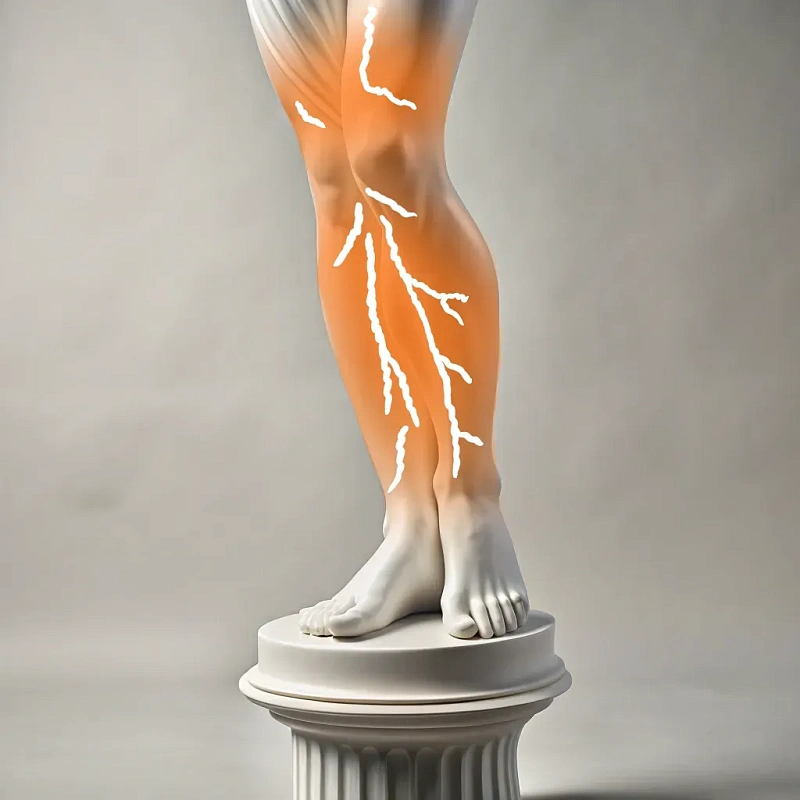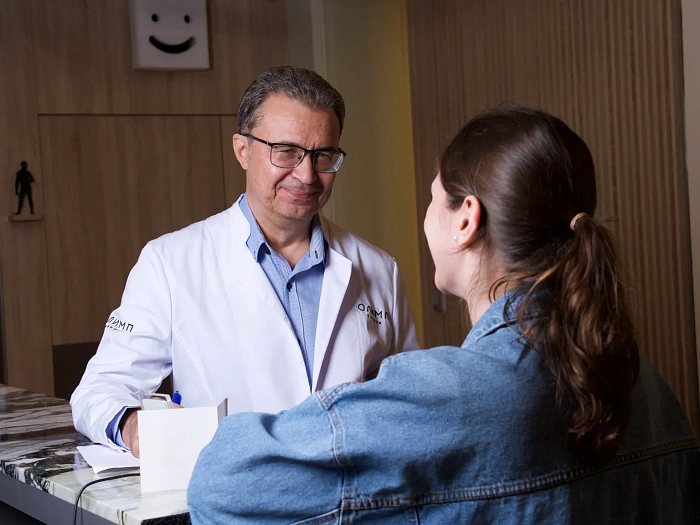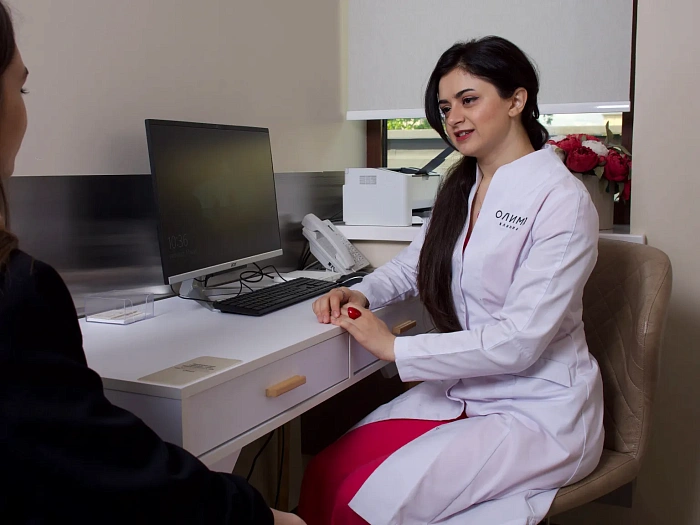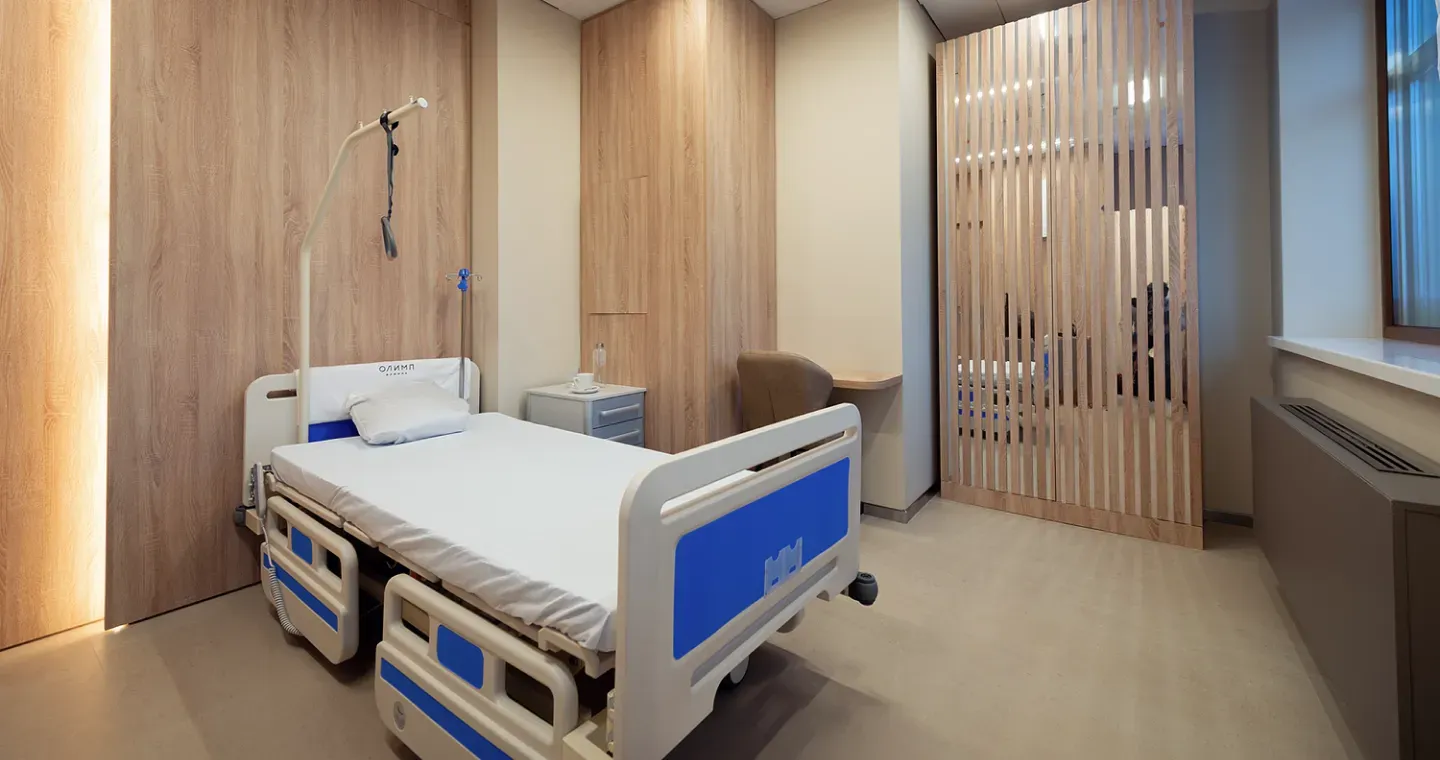Phlebologist's appointment
Consultation with a specialist who is engaged in the diagnosis and treatment of venous diseases. A phlebologist will help identify the early stages of varicose veins, thrombophlebitis and other vascular pathologies, and will also suggest the optimal treatment plan.

Varicose veins, thrombosis or chronic venous insufficiency can worsen a patient's quality of life if they are not treated on time. The first symptoms — heaviness in the legs, swelling, cramps — often remain without proper attention, which leads to the progression of the disease.
At the first signs of a violation of venous circulation, it is important to consult a phlebologist. The doctor will conduct an examination, assess the condition of the veins and blood vessels using ultrasound (Dopplerography) to determine whether there are blood clots or stagnant processes. Consultation is also important for those who have a genetic predisposition to venous diseases or who lead a sedentary lifestyle.
Before visiting a phlebologist, it is recommended: Undergo a general and biochemical blood test. Make a list of available symptoms.
The phlebologist's appointment begins with an examination of the patient and anamnesis collection. The doctor clarifies complaints, symptoms, palpates veins and examines their condition using ultrasound Dopplerography, which allows you to assess blood flow and the presence of pathologies. Based on the data obtained, the phlebologist can offer medical treatment or refer the patient to more in-depth studies and possible surgical intervention.
For diagnosis, the phlebologist uses an ultrasound device with Dopplerography function to assess blood flow and special instruments for palpation of veins.
After receiving a phlebologist, treatment may be prescribed, including wearing compression knitwear and performing special exercises to improve venous circulation.
Benefits
Early diagnosis of venous diseases
It helps to prevent complications associated with thrombosis and venous insufficiency.
Modern methods of treatment
The phlebologist will offer modern minimally invasive treatments such as laser coagulation and sclerotherapy.
An integrated approach
The phlebologist's consultation includes recommendations for the prevention of venous diseases.
Individual treatment plan
The doctor will develop a personalized treatment program for each patient.
Preparation
Before visiting a phlebologist, it is recommended to undergo a general and biochemical blood test in advance, as well as prepare a list of symptoms with a description of their nature and duration.

Consultation
The phlebologist's appointment begins with an examination of the patient and anamnesis collection. The doctor clarifies the complaints and symptoms, performs palpation of the veins and examines their condition using ultrasound Dopplerography, which allows you to assess blood flow and the presence of pathologies. Based on the data obtained, the phlebologist can suggest medication or refer the patient for more in-depth research and possible surgical intervention.

Recommendations
After receiving a phlebologist, treatment may be prescribed, including wearing compression knitwear and performing special exercises to improve venous circulation.

Врачи
Смотреть всех врачейSimilar referral activities
Microosclerotherapy
Микросклеротерапия – метод удаления сосудистых звездочек, некрупных расширенных подкожных вен путем введения склерозанта через иглу маленького диаметра.
Miniflebectomy
Miniflebectomy allows you to remove varicose veins through incisions under the incisos under the local anesthesia. Indications for such an operation are determined by a phlebologist after consultation.
Flebectomy
Flebectomy is a radical method of treating varicose veins, which eliminates visible varicose veins, normalizes blood outflow, eliminates edema.

